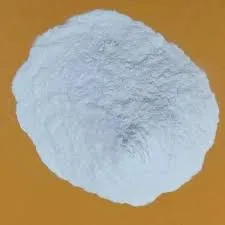
nov . 25, 2024 21:22 Back to list
hpmc hydroxypropyl methyl cellulose
Understanding Hydroxypropyl Methyl Cellulose (HPMC) An Essential Polymer in Various Industries
Hydroxypropyl Methyl Cellulose (HPMC) is a versatile polymer extensively used across a range of industries due to its unique properties. As a non-ionic cellulose ether, HPMC is derived from natural cellulose, making it an excellent biocompatible material. Its applications span pharmaceuticals, food production, construction, cosmetics, and personal care products. This article explores HPMC's properties, functions, and uses, showcasing its importance in modern manufacturing and consumer products.
Properties of Hydroxypropyl Methyl Cellulose
HPMC is characterized by its solubility in both cold and hot water, making it a preferred thickening, gel-forming, and binding agent. It is available in various forms, including powders and pastes, and can be tailored to meet specific viscosity requirements and thermal properties by adjusting its hydroxypropyl and methyl substitution levels. This versatility allows manufacturers to customize HPMC formulations according to the intended application.
One of the standout features of HPMC is its ability to create smooth, stable emulsions, which is vital in ensuring the uniformity and consistency of products. Additionally, its non-toxic and biodegradable nature makes it an attractive option in environmentally conscious product design.
Applications in Pharmaceuticals
In the pharmaceutical industry, HPMC plays a crucial role. It is often used as a thickening agent in gels and ointments, enhancing texture and stability while facilitating controlled release of active ingredients. HPMC is also a key component in oral drug formulations, acting as a binder in tablets as well as a film-forming agent in coatings that provide protection against moisture and enhance swallowability.
Notably, HPMC is utilized in sustained-release formulations, allowing for the gradual release of medication over time. This property significantly improves patient compliance, as it reduces the frequency of dosages needed, thereby improving therapeutic outcomes.
Contributions to Food Production
In the food industry, HPMC serves as a food additive, recognized for its emulsifying, thickening, and stabilizing properties. It is commonly found in products such as sauces, dressings, ice creams, and baked goods. By providing viscosity and enhancing mouthfeel, HPMC improves the overall quality and consistency of food products.
hpmc hydroxypropyl methyl cellulose

Moreover, HPMC acts as a fat replacer in reduced-calorie formulations, contributing to the health trend of lower fat consumption without sacrificing texture or flavor. Its ability to form gels also makes it ideal for creating gluten-free products, catering to the growing demand for gluten-free options.
Role in Construction and Building
In construction, HPMC is a vital ingredient in dry-mix formulations and cement-based products. It enhances the workability, water retention, and adhesion of mortars and plasters, making it easier to apply and ensuring better performance. The water retention properties of HPMC are particularly beneficial as they prevent premature drying of the mixture, allowing for improved curing of cement.
Additionally, HPMC contributes to the overall durability and strength of construction materials, which is crucial for long-lasting infrastructure. Its easy incorporation into various formulations makes it a go-to choice for manufacturers dealing with construction materials.
Use in Cosmetics and Personal Care Products
HPMC is also prevalent in the cosmetics and personal care sector. It is used as a thickener, emulsifier, and stabilizer in products such as lotions, creams, shampoos, and conditioners. Its ability to create a smooth texture enhances the user experience, while its biodegradable properties align with current trends towards sustainable beauty products.
Furthermore, HPMC acts as a film-forming agent, promoting the staying power of various cosmetic applications while providing a soft feel on the skin. This versatility allows formulators to innovate and create multi-functional products that cater to diverse consumer needs.
Conclusion
Hydroxypropyl Methyl Cellulose is an indispensable polymer that significantly impacts numerous industries, including pharmaceuticals, food production, construction, and cosmetics. Its unique properties, combined with its versatility, ensure that HPMC will continue to play a vital role in the development of innovative products. As industries increasingly focus on sustainability and functionality, HPMC remains a key ingredient that bridges the gap between consumer demands and environmentally responsible practices.
In summary, understanding HPMC's capabilities provides insights into its essential role in both everyday products and specialized applications, highlighting its importance in a rapidly evolving market.
-
The Widespread Application of Redispersible Powder in Construction and Building Materials
NewsMay.16,2025
-
The Widespread Application of Hpmc in the Detergent Industry
NewsMay.16,2025
-
The Main Applications of Hydroxyethyl Cellulose in Paints and Coatings
NewsMay.16,2025
-
Mortar Bonding Agent: the Key to Enhancing the Adhesion Between New and Old Mortar Layers and Between Mortar and Different Substrates
NewsMay.16,2025
-
HPMC: Application as a thickener and excipient
NewsMay.16,2025
-
Hec Cellulose Cellulose: Multi functional dispersants and high-efficiency thickeners
NewsMay.16,2025







